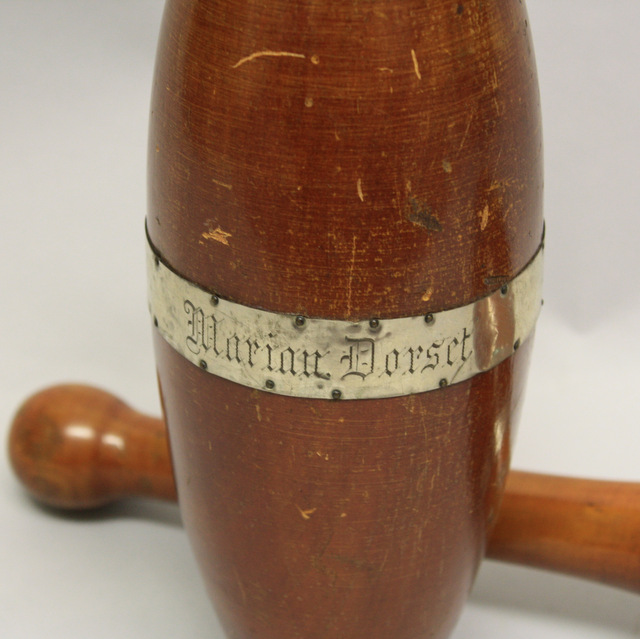Copyright La Crosse County Historical Society
Emily Patwell
Catalog Number: 2012.011.01
The cap pictured here belonged to Ernie Howard, a bus driver in La Crosse between 1965 and 1977. His black-and-blue cap with a visor and a La Crosse Transit Co. badge will be familiar to readers who recall riding the bus in the 1970s.
Public transportation has been a critical part of the city’s infrastructure since the La Crosse Street Railway Co., the area’s first streetcar company, was established in 1879.
By 1885, it merged with another company into the La Crosse City Railway Co. Originally using horse-drawn carriages, they introduced their first electric trolleys in 1890. In 1913, the Wisconsin Light and Power Co. purchased the streetcar lines before changing its name to the Mississippi Valley Public Service Co. in 1926. When the fuel and rubber shortages of the World War II years ended, the company replaced the trolleys with buses.
In 1949, the company was sold and renamed the La Crosse Transit Co. The city purchased the company and renamed it the La Crosse Municipal Transit Utility in 1975.
In addition to providing transportation, MTU buses have provided jobs for people like Ernie Howard.
A native and lifelong resident of the La Crosse area, Ernie Howard was born Ernest Lloyd Tracey to Lloyd Tracey and Anna Howard (née Mahlum) in 1926. After his parents divorced, Ernie went to live with his grandparents, Even and Andrine, in Holmen. He completed grade school, then moved back to La Crosse to live with his mother and stepfather, Everett W. Howard. Ernie graduated from Logan High School in 1944, and subsequently served in the U.S. Navy as a corpsman with the Seabees in Okinawa during WWII.
After the war, he legally changed his name to Ernest Leon Howard and married Elizabeth Rosina Pertzsch. They had a daughter, Sandra, and two sons, Sigurd and Douglas.
Ernie began working for the La Crosse Transit Co., and later the MTU, around 1965, and drove a bus for 12 years. His route, No. 3, served the city’s south-southeast section and included Aquinas High School, Central High School and St. Francis Hospital.
On Oct. 15, 1977, at age 51, he was suddenly struck with a rare auto-immune illness known as Guillain-Barré Syndrome. The neurological syndrome leads to pain, tingling, numbness, and in extreme cases, paralysis. While the precise causes of Guillain-Barré Syndrome are unknown, it often occurs after acute infections of influenza. Ernie’s wife reported that he had been sick with the flu the week before his collapse.
His manager, Percy Mahlum, often said that Ernie was a hard worker who rarely called in sick and kept his bus spotless, earning the nickname “Mr. Clean.” When Ernie had called in after contracting the flu, Mahlum knew that he must have been very sick.
Ernie Howard retired from bus driving, but he slowly recovered from total paralysis after being treated at Lutheran Hospital. He expressed his hope for full recovery when meeting his favorite country singer, Bill Anderson, after six weeks of hospitalization.
He remained disabled until his death in 2010. His bus driver’s cap was donated by his son, Douglas Howard, and is preserved in the La Crosse County Historical Society’s collection as a memento of the history of the city’s public transportation system.
This article was originally published in the La Crosse Tribune on June 23, 2018.
This object can be viewed in our online collections database by clicking here.




